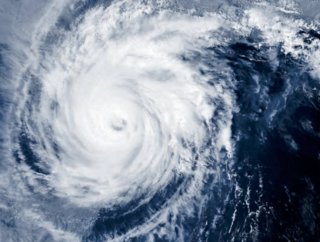Top 10 climate impacts on offshore energy

In its new report, Oceanographic climate change: The impact of ocean-based climate change trends, Chaucer warns that the offshore energy sector – particularly assets such as oil platforms and wind turbine installations – is on course for a material change in risk exposure from worsening extreme weather conditions including changes in storm patterns.
Chaucer cautions that some offshore facilities may not be designed to sufficiently withstand such environmental challenges and are calling for industry and the insurance sector to come together to work to understand these risks better.
Here are 10 key recommendations and warnings contained within the report.
10: Poor performance of aging infrastructure
The report warns one of the greatest concerns to the offshore energy sector is the poor performance of aging infrastructure and assets being decommissioned under changing environmental conditions. There are potential issues around the engineering technology and its ability to withstand extreme weather events that have not been incorporated into the design.
09: Better climate modelling is crucial
The energy industry needs to ensure it is using the best possible information to make its decisions. This includes academic research and advances, industry knowledge, historical data and existing forward-looking models, new and different data sources, and analysis techniques such as open source.
This is crucial not just for (re)insurers with respect to portfolio and exposure management, but also for energy customers, especially regarding the design of technologies, tools and processes, the report states.
08: Enhanced data collection and more focused analysis
There is material uncertainty as to how offshore energy assets, supply chains and business models will react to these identified climate change trends.
To combat this, the industry needs to increase the volume, granularity and overall quality of the data it collects, and bring in a range of skillsets and backgrounds around a table to focus on analysing the impacts of defined problem statements.
07: Coastal erosion
Although cited as a 'low risk' to the offshore energy industry, coastal erosion remains a key issue as it's primarily caused by rising sea levels, which are occurring at a rate of 2-3mm per year.
The good news for the industry is that most global assets built after 1990, and to return periods of more than 100 years, are designed to withstand most of the factors listed - at least the first six, if not the 'big four'.
06: Larger waves
Wave height appears to have risen over the past 25 years due to more severe and sustained winds. This trend is directly correlated with two of our previous trends addressing increased extremes in storminess and higher proportions of the most severe tropical cyclones; stronger winds lead to larger waves.
However, this increase isn’t uniform across the globe, and some waters such as the North Atlantic have seen a greater increase. A large part of this rise may be linked to North Atlantic Oscillation (NAO).
05: Changing salinity of oceans
Evaporation is increasing sea salinity at the equator, while meltwater from glaciers and the Greenland and Antarctica ice sheets is decreasing it at the poles - all of which could impact offshore energy assets in the months and years to come.
04: Rising sea levels
Although sea-level rises vary around the world, they are one of the more obvious indicators of climate change, with an average global rise of between 2.6mm and 3mm a year.
Sea levels have been rising at a higher rate since 1993 compared with previous decades, and this increasing acceleration is even higher than that seen in the 20th century. This trend is caused by three climate related factors:
1. Thermal expansion of the oceans
2. Melting glaciers and small ice caps
3. Major ice sheets are melting and calving
03: More winter storms in new areas
Severe winter weather in southern latitudes is often a result of significant deviations in the jet stream. The jet streams are fast-flowing narrow air currents just below the stratosphere, created by the difference in temperatures between the poles and the equator.
As the poles are warming at a faster rate than the equator and the difference reduces, the jet streams become weaker and less stable, and with greater oscillation. This drives cold dry air south
and warm moist air north, bringing cold storms to areas without the infrastructure or capabilities to cope with harsh winters. Climate change is making this more likely.
02: Extreme weather is worsening
Extreme weather is becoming more severe and more frequent, causing an increase in heatwaves, extreme precipitation and an increase in severity of storminess.
According to the National Centre for Atmospheric Research and Willis Towers Watson, there is a growing trend in both severe droughts and extreme rainfall. Heatwaves are also hitting higher peak
temperatures, exceeding previous records in 10-20% of land mass. Additionally, in the mid-latitudes there is a lot of evidence linking Arctic Sea ice disappearance to more extreme weather.
01: Tropical cyclones are changing
Although the frequency of cyclones overall (categories 1-5) is expected to remain constant or even decrease, the proportion of the most severe tropical cyclones (categories 4 & 5) is expected to increase.
As the atmosphere warms, so too does the ocean, providing more energy throughout the year for tropical cyclones to form. It is likely that the trend of earlier storms in the North Atlantic will continue with climate change. Where tropical cyclone seasons usually started in mid-June to early July, they are now more likely to begin in May.
James Brown, Head of Natural Resources at Chaucer, says the whole insurance industry needs to start working with their customers to adapt to climate change and to support increased resilience of their infrastructure, facilities and supply chains.
Insurers have the opportunity to drive tangible change with marine and energy customers, brokers, regulators and governments.
“Collective action is imperative to ensure we manage these risks, mitigate against future impacts and create new solutions for emerging opportunities in a rapidly changing market," he said.






